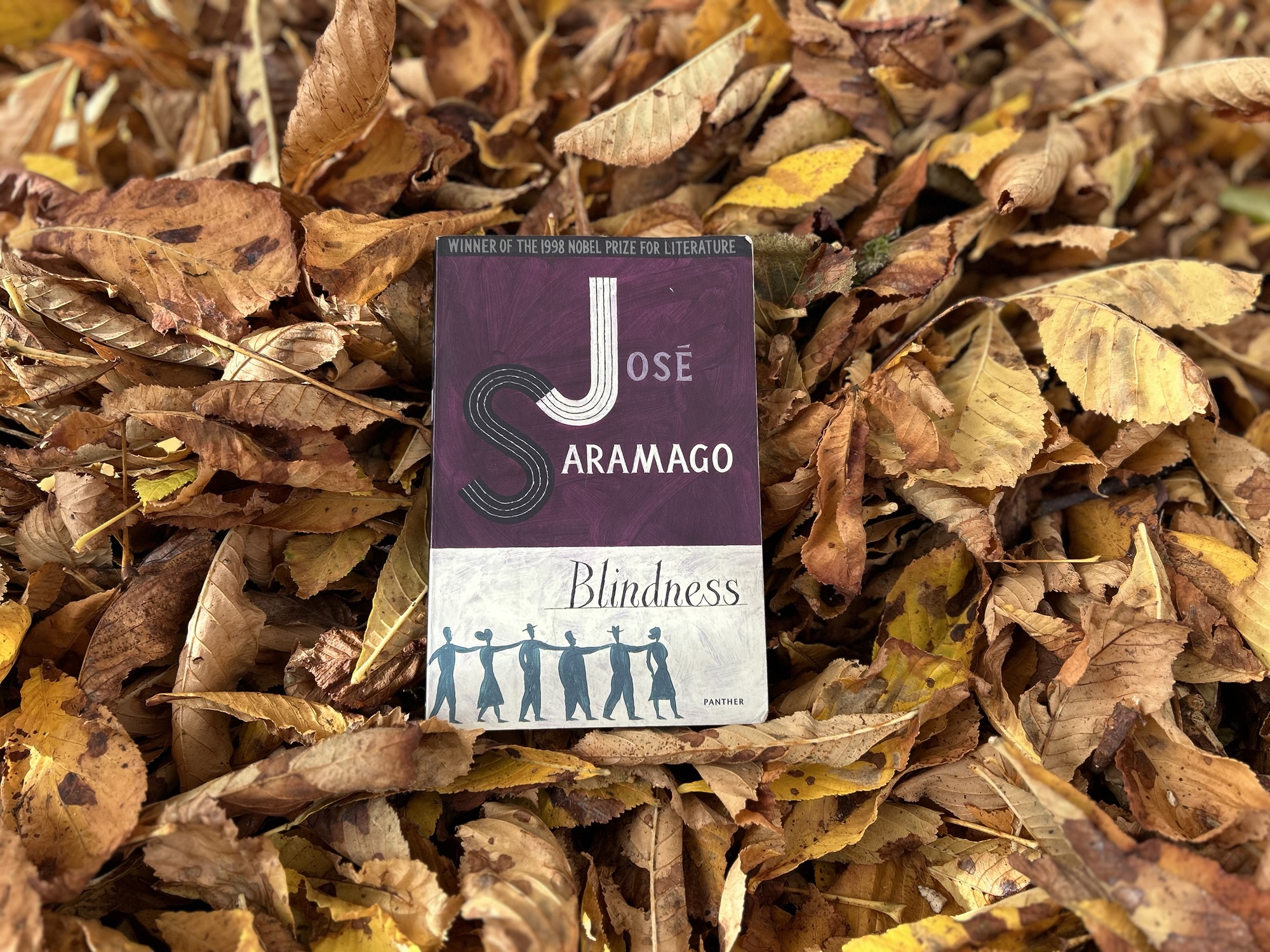In the reading world, we’ve come to see October as the traditional time of the year for reading horror stories. Lots of readers go for Frankenstein, or The Picture of Dorian Gray, as I also did in the past years. But I’m doing something else this year. Blindness by José Saramago makes the classic 19th century horror stories feel on the cozy and sensationalistic side. People buried alive, monsters from beyond the reach of time chasing the reader into the dark corners of her mind while she’s safe among her lit candles and cups of hot chocolate. But there is nothing cozy about Blindness. Reading it feels like stepping into a lucid nightmare, aware of the horror which arises with every word pushing you not only in the dark corners of your own mind, but also in the dark corners of living in a community of people.
blindness by josé saramago, an allegoric dystopia
I have to admit I did cheat a bit in the previous paragraph. I wouldn’t strictly think of Blindess as horror literature as I would as a dystopia. The horror comes more as a bonus. The novel begins with an unexplained epidemic of sudden blindness. A man waits at the traffic light as he suddenly cries out “I am blind”. To the stranger who helps him get home and who is the next to lose his sight the first man explains, “it’s as if I were caught in a mist or had fallen in a milky sea”. Next in turn are his wife, the doctor who first attempts to treat him, then the patients in the doctor’s office. The cases are reported to the government who reacts by isolating the affected and the contaminated in an abandoned asylum. The blind are guarded by soldiers who fear infection, and the inmates are left to fend for themselves. Initially there seems like some sort of order can be established, but the continuous flow of people soon leads to both physically and morally violent fights for food. Among the uncontainable chaos which arises it is only the doctor’s wife who doesn’t go blind. Her secret vision becomes both blessing and curse as she witnesses the descent of others into degradation.
As you start reading you understand that the book doesn’t necessarily live off of the story it tries to contain. The story is the surface and the real movements happens beneath. The blindness is both a disease, and an essential condition of being human, navigating the world without really seeing. The doctor’s wife, the only one who can see, is a helpless witness, and her sight a metaphor for awareness that offers no salvation. As a reader you empathize both with her and with the suffering of the unseeing. You understand that she and the blind live on two different levels of existence. The blind are shut down in their condition, unaware and, if not seeing and not being seen, careless, while the doctor’s wife sees everything without being able to change anything and, in the end, without being able to prevent degradation.
Books always leave more to uncover. Subscribe to get more reflections and interpretations delivered by email.
language and narration
And then there are certain things that are best left unexplained, it’s best just to say what happened, not to probe people’s inner thoughts and feelings, as on that occasion when the doctor’s wife had got out of bed to go and cover up the boy with squint whose blanked had slipped off
Translation by Giovanni Pontiero
This is my second time reading Blindness by José Saramago and I could remember a lot of the scenes I now reread. The beginning is especially memorable, and I think it’s perfectly visualized in the 2008 film directed by Fernando Meirelles. You see the city from the outside on a busy morning, everyone going about their own business. The commonality of the scene is disrupted by a traffic incident: a car is not moving forward and a crowd gathers to see what happened. The driver is blind. The occurrence is not left uncommented. “A case of nerves”, “these things happen”, “call the police” various voices say, gathered by the narrator in a single paragraph which contains in it voices, traffic lights, the anguish of the blind man, the offer of someone to take him home. Funny enough, this detail of storytelling hadn’t stayed with me.
I became more familiar with Saramago’s style earlier this month, when I read Death with Interruptions, a novel which tells what happens when people don’t die anymore. The narration doesn’t make the difference between what’s said, thought or observed, with the narrator keeping everything in control, shifting between intimacy and intrusion. One moment he describes with blood-curling sarcasm a mass of blind people struggling to find the entrance into the asylum, the next commenting on the logistics of needing to provide food so many people, and yet the next praising as if in an old-fashioned chronicle the relative order of the ward where the doctor’s wife was quartered. The style is disorienting at first, but you quickly get used to it and perceive it as a simulated way of spoken storytelling. You see and hear things from the outside, some things people do remain unexplained, but maybe that’s just how they’re supposed to be.
nameless here, forevermore
We’re so remote from the world that any day now, we shall no longer know who we are, or even remember our names, and besides what use would names be to us
Translation by Giovanni Pontiero
Both in Death with Interruptions and in Blindness, the characters have no names. The reasons are different though, and the feeling the books give off is different as well. The first reads like an objective chronicle where “facts” are important, not people, while the second makes a clear statement: in the world of the blind, where death, decay and degradation roam freely, there is no use for names. People are becoming less like people and more like mouths in need of feeding and bodies in need of washing. We believe that names confer meaning and permanence, but when society collapses, so does individuality, and finally, life.
And because I can’t help but read what I’ve so knowingly dismissed in the first paragraph to be “cozy” and “sensational”, I’m doing my traditional Poe reading for Halloween this year as well. The Raven has a special pull for me this time of the year and it’s always rewarding to reread it. This year it’s especially rewarding because it feels intimately linked to Saramago’s novel. The speaker laments the departure of his beloved “whom the angels name Lenore”. But she’s gone, she’s not Lenore anymore, and the stanza ends with the finality of her being “nameless here, forevermore”. In the context of Saramago, this verse feels cold, like a diagnosis. Language has failed at the boundary with death and the human need to name and know dissolves into a white fog. What Poe writes as a lament for lost love, Saramago expands into an epitaph for a decayed society, for a world where blindness renders us all equally unseeing, equally erased.





your thoughts?